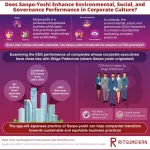(Press-News.org) Medical image analysis using AI has developed rapidly in recent years. Now, one of the largest studies to date has been carried out using AI-assisted image analysis of lymphoma, cancer of the lymphatic system. Researchers at Chalmers University of Technology in Sweden, have developed a computer model that can successfully find signs of lymph node cancer in 90 percent of cases.
New computer-aided methods for interpreting medical images are being developed for various medical conditions. They can reduce the workload for radiologists, by giving a second opinion or ranking which patients need treatment the fastest.
"An AI-based computer system for interpreting medical images also contributes to increased equality in healthcare by giving patients access to the same expertise and being able to have their images reviewed within a reasonable time, regardless of which hospital they are in. Since an AI system has access to much more information, it also makes it easier in rare diseases where radiologists rarely see images," says Ida Häggström, Associate Professor at the Department of Electrical Engineering at Chalmers.
In close collaboration with Sahlgrenska Academy at the University of Gothenburg and Sahlgrenska University Hospital, she has participated in the development of medical imaging in the field of cancer, as well as in a number of other medical conditions, such as cardiovascular disease, stroke and osteoporosis.
Large study to track cancer in the lymphatic system
Together with clinically active researchers at, among others, Memorial Sloan Kettering Cancer Center in New York, Ida Häggström has developed a computer model that was recently presented in The Lancet Digital Health.
"Based on more than 17,000 images from more than 5,000 lymphoma patients, we have created a learning system in which computers have been trained to find visual signs of cancer in the lymphatic system," says Häggström.
In the study, the researchers examined image archives that stretched back more than ten years. They compared the patients’ final diagnosis with scans from positron emission tomography (PET) and computed tomography (CT) taken before and after treatment. This information was then used to help train the AI computer model to detect signs of lymph node cancer in an image.
Supervised training
The computer model that Ida Häggström has developed is called Lars, Lymphoma Artificial Reader System, and is a so-called deep learning system based on artificial intelligence. It works by inputting an image from positron emission tomography (PET) and analysing this image using the AI model. It is trained to find patterns and features in the image, in order to make the best possible prediction of whether the image is positive or negative, i.e. whether it contains lymphoma or not.
"I have used what is known as supervised training, where images are shown to the computer model, which then assesses whether the patient has lymphoma or not. The model also gets to see the true diagnosis, so if the assessment is wrong, the computer model is adjusted so that it gradually gets better and better at determining the diagnosis,” says Häggström.
In practice, what does it actually mean that the computer model uses artificial intelligence and deep learning to make a diagnosis?
"It's about the fact that we haven't programmed predetermined instructions in the model about what information in the image it should look at, but let it teach itself which image patterns are important in order to get the best predictions possible.
Support for radiologists
Ida Häggström describes the process of teaching the computer to detect, in this case, cancer in the images as time-consuming, and says that it has taken several years to complete the study. One challenge has been to produce such a large amount of image material. It has also been challenging to adapt the computer model so that it can distinguish between cancer and the temporary treatment-specific changes that can be seen in the images after radiotherapy and chemotherapy.
"In the study, we estimated the accuracy of the computer model to be about ninety per cent, and especially in the case of images that are difficult to interpret, it could support radiologists in their assessments.”
However, there is still a great deal of work to be done to validate the computer model if it is to be used in clinical practice.
"We have made the computer code available now so that other researchers can continue to work on the basis of our computer model, but the clinical tests that need to be done are extensive," says Häggström.
More about the research
• The scientific article Deep learning for [¹⁸F]fluorodeoxyglucose-PET-CT classification in patients with lymphoma: a dual-centre retrospective analysis has been published in The Lancet Digital Health.
• The authors of the study are Ida Häggström, Doris Leithner, Jennifer Alvén, Gabriele Campanella, Murad Abusamra, Honglei Zhang, Shalini Chhabra, Lucian Beer, Alexander Haug, Gilles Salles, Markus Raderer, Philipp B. Staber, Anton Becker, Hedvig Hricak, Thomas J. Fuchs, Heiko Schöder and Marius E. Mayerhoefer.
• The researchers are active at Chalmers University of Technology, Memorial Sloan Kettering Cancer Center in New York, Medical University in Vienna, Icahn School of Medicine at Mount Sinai in New York and NYU Langone Health in New York.
For more information, please contact:
Ida Häggström, Associate Professor, Division of Signal Processing and Biomedical Engineering, Department of Electrical Engineering, Chalmers University of Technology
+46 31 772 22 19, idah@chalmers.se
The contact person Ida Häggström speaks English and Swedish, and is available for live and pre-recorded interviews. At Chalmers, we have podcast studios and broadcast filming equipment on site and would be able to assist a request for a television, radio or podcast interview.
Caption to the figure showing the principle of how the AI model is trained:
An image from positron emission tomography (PET) is entered and analysed by the AI model. It is trained to find patterns and features in the image in order to make the best possible prediction of whether the image is positive or negative, i.e. whether it contains lymphoma or not. Illustration: Ida Häggström
NOTE TO THE EDITOR:
Images provided in Chalmers University of Technology press releases are, unless specified otherwise, free for download and publication as long as credit is given to the University and the individual creator. Cropping and rescaling of the images is permitted when required for adaptation to the publication’s format, but modifications that would influence the message and content of the original are not. The material is primarily intended for journalistic and informative use, to assist in communication and coverage of Chalmers’ research and education. Commercial usage, for example the marketing of goods and services, is not permitted.
We kindly request credit to be given in the following format where possible:
Image/Graphic/Illustration: Chalmers University of Technology | Name Surname
END
New AI model detects ninety percent of lymphatic cancer cases
2024-03-14
ELSE PRESS RELEASES FROM THIS DATE:
Bariatric surgery linked to heart health improvements in people with severe obesity
2024-03-14
WASHINGTON—Bariatric surgery may result in significant cardiometabolic improvements, particularly among younger, female, or white people and those without comorbidities, according to new research published in the Journal of the Endocrine Society.
The United States has the highest obesity rates globally. In 2017-2018, about 40% of U.S. adults had obesity and 9% had severe obesity. The prevalence is particularly high among Black adults. Bariatric surgery is one method to help people with severe obesity lose a lot of weight and improve their health.
“Our study highlights how bariatric surgery not only leads to significant weight loss but also substantially improves ...
New report finds public spending on global health innovation delivers blockbuster returns, saving lives while generating billions of dollars in benefits globally and domestically
2024-03-14
WASHINGTON, DC (March 14, 2024)—Over the last 16 years, U.S. government funding for research and development (R&D) targeting global health challenges supported dozens of breakthrough innovations while generating billions of dollars in economic benefits, both global and domestic, and spurring a surge of industry investments, according to a new analysis from the Global Health Technologies Coalition (GHTC) and Policy Cures Research (PCR).
“Public funding for global health R&D is small, relative to the incredible returns it provides for fighting neglected ...
Breast cancer diagnoses plummeted during first year of pandemic
2024-03-14
Key Takeaways
There was a 15-20% decrease in newly diagnosed breast cancer cases reported to American College of Surgeons Commission on Cancer sites in 2020 compared to 2019.
These study results have implications for how physicians and policymakers can address issues that may arise due to the diagnostic delays that occurred during the COVID-19 pandemic, the authors said.
CHICAGO: Several studies have described the distinct ways the COVID-19 pandemic adversely impacted cancer care, but less is known about the specific ways the pandemic disrupted breast cancer, the ...
Demystifying nano-neuro interactions
2024-03-14
By Shawn Ballard
Nanomaterials already play a vital role in enhancing the performance of everyday products from electronics to cosmetics to food packaging. But, beyond their usefulness in making images sharper and products more stable, researchers in the McKelvey School of Engineering at Washington University in St. Louis have shown nanoparticles may also be an essential tool in advancing our understanding of the brain and opening new avenues for treating neurological disorders such as Parkinson's disease and epilepsy.
Srikanth Singamaneni, the Lilyan & ...
Common viruses trigger most cases of intussusception in children
2024-03-14
Viral infections trigger more cases of intussusception, the common cause of bowel blockages in young children, than previously thought, according to a new study.
The research, led by Murdoch Children’s Research Institute (MCRI) and published in Clinical Infectious Diseases, found during the COVID-19 lockdowns hospital admissions for intussusception, a medical emergency involving obstruction of the intestine, among young children significantly decreased.
For the study, 12 years of data was analysed across Victoria, NSW and Queensland. ...
New multimillion dollar research facility set to unlock secrets of quantum materials
2024-03-14
Material scientists from the University of British Columbia Stewart Blusson Quantum Matter Institute (Blusson QMI) will lead the development of a multi-million world-class crystal growth facility thanks to $5.8 million in investments by the Canada Foundation for Innovation (CFI) and the B.C. Knowledge Development Fund (BCKDF) announced today.
Blusson QMI Scientific Director Andrea Damascelli said the investment will strengthen Canada’s position as a leader in quantum research and technology.
“The investment enables the establishment of state-of-the-art research infrastructure that is unique in Canada and will deliver exceptional impact for quantum material design, technology ...
Improving education and human security for vulnerable refugee children
2024-03-14
‘Access to education’ is recognized as a fundamental human right and is listed as one of the United Nations’ sustainable development goals to achieve by 2030. Quality education unlocks opportunities and gives individuals the freedom to make livelihood choices and shape their own destinies. However, an increasing number of refugee children are deprived of this fundamental right. According to the UNHCR, between 2010 and 2022, the number of child refugees doubled from 20.6 million to about 43.3 million.
An overwhelming majority of these refugees are displaced to neighboring countries that are short on resources and lack adequate educational infrastructure ...
The timeless wisdom of Sanpo-yoshi for present day businesses
2024-03-14
There is a growing emphasis for corporations to consider their impact on the environment, society, and its stakeholders. Broadly falling under environmental, social and governance or ESG, this involves practices such as using sustainably sourced materials, reducing carbon emissions, improving labor practices, fostering positive community relations, and promoting ethical corporate behavior, including efforts against anti-competitive practices and corruption.
The first mention of ESG appears in a 2004 UN report ...
Supercharging fuel cells with caffeine
2024-03-14
With global goals set on transitioning away from fossil fuels, fuel cells stand out as a promising carbon-free energy source. Comprising an anode and a cathode separated by an electrolyte, fuel cells convert the chemical energy of fuel directly into electricity. The anode receives the fuel, while an oxidant, typically oxygen from the air, is introduced at the cathode. In a hydrogen fuel cell, hydrogen undergoes oxidation at the anode, producing hydrogen ions and electrons. The ions move through the electrolyte to the cathode, and electrons flow through an external circuit, generating electricity. At the cathode, oxygen combines with the hydrogen ions ...
Poor neighborhoods linked to elevated dementia risk and faster brain aging
2024-03-14
DURHAM, NC – Living in a poorer neighborhood is linked to accelerated brain aging and increased dementia risk early in life, regardless of income level or education, a Duke University-led study finds.
The study, which appears March 14 in Alzheimer's & Dementia: The Journal of the Alzheimer's Association, suggests that targeting disadvantaged neighborhoods for dementia prevention programs and encouraging clinicians to consider a patient’s address could help lower dementia risk.
“If you want to prevent dementia, and you’re not asking someone ...





